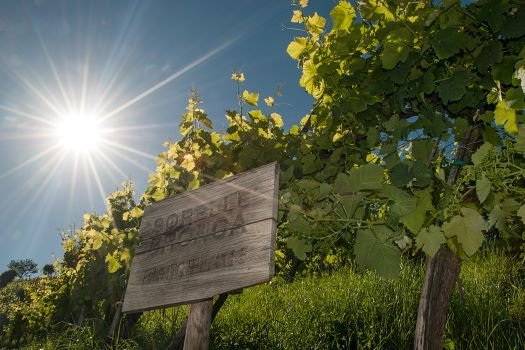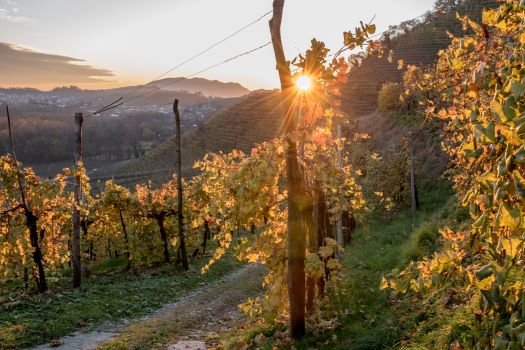A winery in the Prosecco Superiore region that knows no rest, with a microzonation study to produce wines that would enhance the territory according to its different expressions.
Sorelle Bronca was founded in 1989, in Colbertaldo di Vidor (TV), when sisters Antonella and Ersiliana inherited fields and passion for wine production from their father and grandfather. We are in Conegliano Valdobbiadene, in the core zone of the Unesco World Heritage hill country. About 350,000 bottles of Prosecco Superiore Docg and Colli di Conegliano white and red Docg are produced here from 25 hectares of estate vineyards. It is precisely these vineyards that have inspired the sisters’ production, which today is mainly characterized by three “Particella” labels, and then by “L’Est” and “L’Ovest,” two Prosecco Superiore made respectively with grapes from vineyards in the Conegliano area, to the east of the appellation, and the Valdobbiadene area, as far as the west is concerned.
Glera therefore reigns supreme, with a few minor varieties for Prosecco, flanked by Incrocio Manzoni, Riesling, Pinot Bianco and Sauvignon for white wines. Cabernet Sauvignon, Merlot, Cabernet Franc and Marzemino for the reds.
The watchword for Sisters is microzoning; an ideal that takes further shape with the establishment of a proper winemaking protocol dedicated to Particella wines. Protocol that will become the subject of study and scientific popularization with its publication in early 2024, signed by oenologist Federico Giotto and collaborators.
The project was born from a stimulus the sisters received from the market. The world was asking for Cartizze recognizing it as the cutting edge of Conegliano Valdobbiadene production. Unable to produce it by not owning any of it, it was thought how to make up for this apparent lack. Thus, the best plot was identified whose production, kept separate from everything, would be the flagship of the farm.
The first born Particle is P68, followed by P232 and P181. Three expressions of Glera all Docg and all three Rive. On the front label, however, they carry only the letter P followed by the corresponding number. A choice that first took place when the Rive had not yet been codified but the company already felt the need to enhance the territory according to its different expressions.
Of course, it should be mentioned that the three P’s also have three different dosages. As we know, dosage changes the sugar content of wine and affects its organoleptic profile, but that is not the point. Because in the case of Particles it should be understood as an additional means of enhancing intrinsic diversity. What makes the differentiation realistic and measurable are the pedoclimatic values of each parcel. Soil composition, depth, mineral content, organic matter, nutrients and water; combined with exposure, elevation, slope and temperatures.
The three P’s are followed by a very recent image and name change for Brut and Extra Dry as well. The two Prosecco Superiore now have their own names: L’Est and L’Ovest, respectively, to emphasize the dual soul of the appellation and also of Sorelle Bronca, who have vineyards you know in the east and west. An image change that does not betray the original nature of these two wines, but simply adds an extra piece to their enhancement.
Unexpectedly noteworthy, not because I expected him to be bad, perhaps more because I was unaware of his existence, is SerBele. Colli di Conegliano Riserva Rosso, there is even a specification, even Docg! When I think of all the times I have been in the territory and never noticed I should be ashamed. Actually these wines are somewhat kept under wraps, and revealed only after the undisputed prince, Prosecco Superiore, has made its appearance. Bordeaux-cut, in this case it is predominantly Cabernet Sauvignon and Merlot, with the addition of Cabernet Franc and Marzemino as per specifications. It rests 3 years in the cellar in order to become a reserve, 2 of which are in barrique and 1 in bottle. Minimum regulated wood stopover equal to 6 months. Tasted in 2011 vintage, still in good shape, powerful and concentrated, rich in color and texture. Super happily re-watched the 2018 version; fruity, pleasantly vegetal and fresh on the palate. A deceptive wine that hides structure and strength under an inviting guise of bright, vibrant color–a real find!









